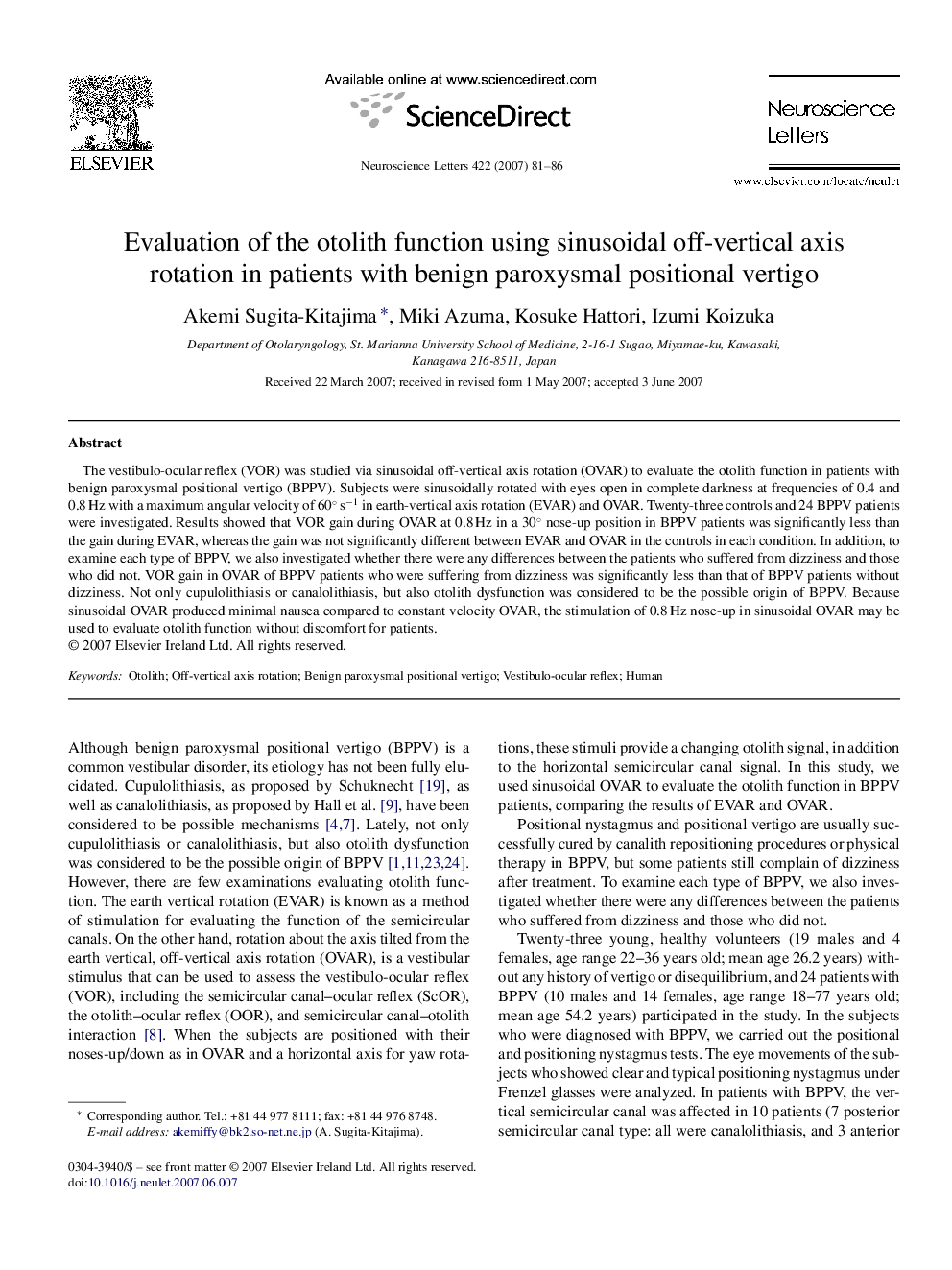| Article ID | Journal | Published Year | Pages | File Type |
|---|---|---|---|---|
| 4349260 | Neuroscience Letters | 2007 | 6 Pages |
The vestibulo-ocular reflex (VOR) was studied via sinusoidal off-vertical axis rotation (OVAR) to evaluate the otolith function in patients with benign paroxysmal positional vertigo (BPPV). Subjects were sinusoidally rotated with eyes open in complete darkness at frequencies of 0.4 and 0.8 Hz with a maximum angular velocity of 60° s−1 in earth-vertical axis rotation (EVAR) and OVAR. Twenty-three controls and 24 BPPV patients were investigated. Results showed that VOR gain during OVAR at 0.8 Hz in a 30° nose-up position in BPPV patients was significantly less than the gain during EVAR, whereas the gain was not significantly different between EVAR and OVAR in the controls in each condition. In addition, to examine each type of BPPV, we also investigated whether there were any differences between the patients who suffered from dizziness and those who did not. VOR gain in OVAR of BPPV patients who were suffering from dizziness was significantly less than that of BPPV patients without dizziness. Not only cupulolithiasis or canalolithiasis, but also otolith dysfunction was considered to be the possible origin of BPPV. Because sinusoidal OVAR produced minimal nausea compared to constant velocity OVAR, the stimulation of 0.8 Hz nose-up in sinusoidal OVAR may be used to evaluate otolith function without discomfort for patients.
